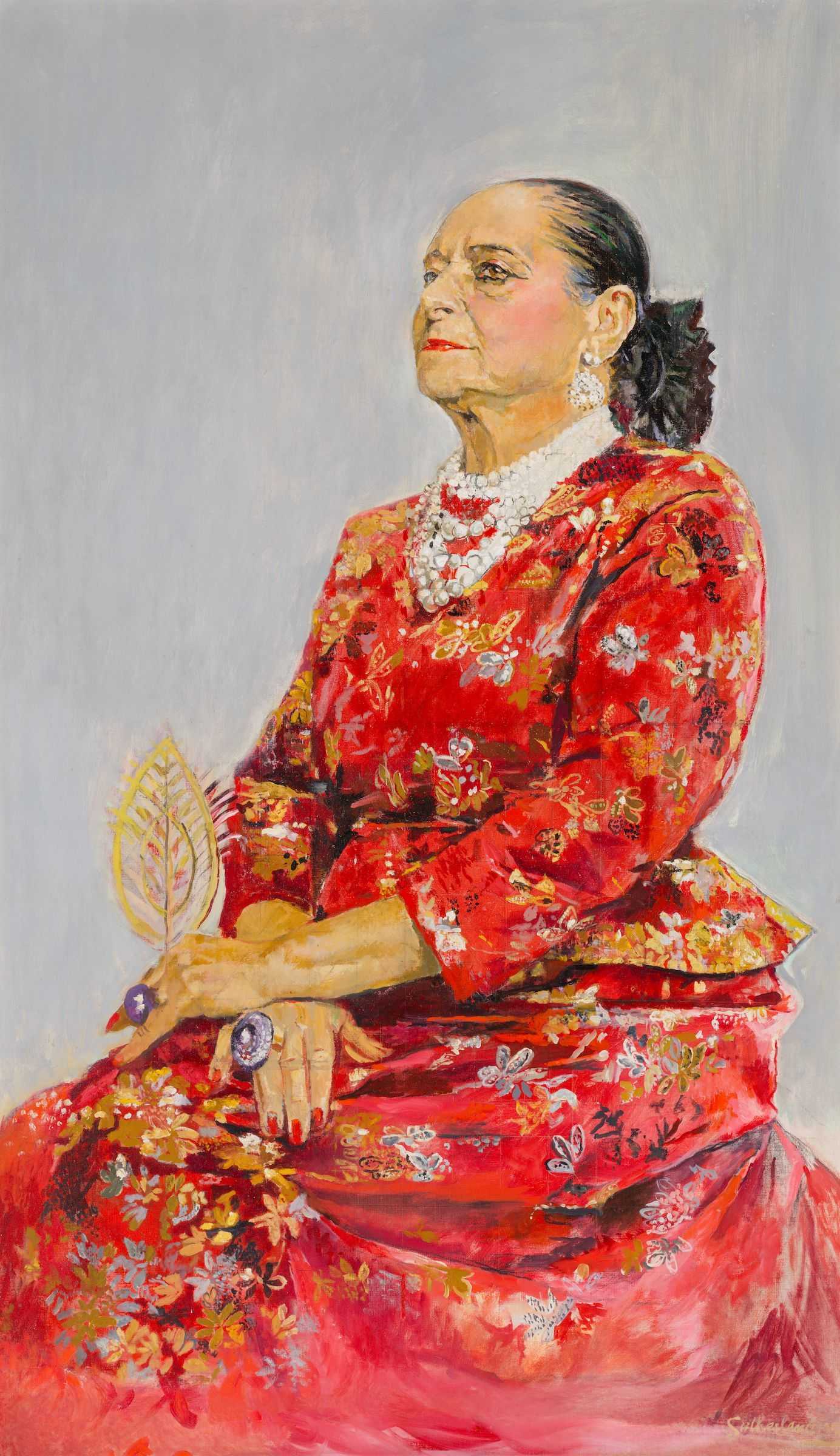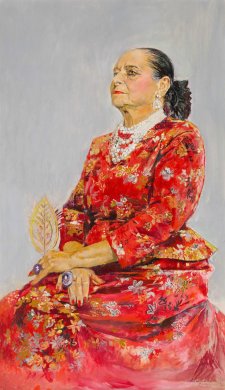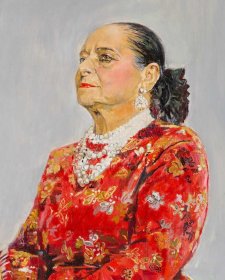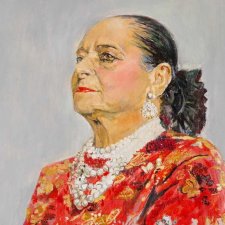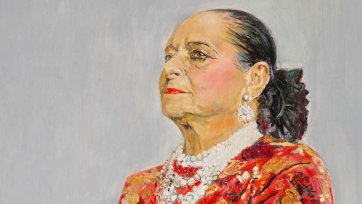A magnanimous portrait of Helena Rubinstein, the first self-made multi-millionairess of modern times has been acquired for the National Portrait Gallery’s collection thanks to philanthropic donations.
As creator of the first publicly-listed global cosmetics corporation that began in Melbourne, Helena Rubinstein was a business woman with a natural entrepreneurial instinct. Depicted in a red brocade Balenciaga gown, her portrait projects personal glamour; an image she carefully constructed and an ethos she shared with her cosmetic empire.
Director of the Portrait Gallery, Angus Trumble, is enamoured by the larger-than-life portrait and its representation of the self-made Helena.
‘The portrait tells the tale of an empowering and inspirational woman. Graham Sutherland has done an incredible job capturing Helena’s spirit and determination; it’s an outstanding addition to the Gallery’s collection,’ said Angus.
‘Acquiring the portrait was made possible through the funds provided in equal parts by Marilyn Darling AC, Tim Fairfax AC and the Sid and Fiona Myer Family Foundation 2015. Without their support the Gallery would not have been able to purchase this significant portrait.’
Helena’s initial response to the painting in 1957 was frosty but she claimed that over time her opinion changed, “the picture has grown on me. I remind myself that some art critics have likened it to a Renaissance masterpiece.”
Graham Sutherland OM produced three versions of the portrait. The first was accidentally destroyed by fire. The second is held in the collection of the Beaverbrook Art Gallery in Canada and the third has now been acquired by the Gallery.
Graham is widely recognised and celebrated as one of the most distinguished painters of the 20th century. Other works by Graham include designing the tapestry for Basil Spence’s new Coventry Cathedral in 1954 as well as his portrait of Somerset Maugham in 1949.
Helena Rubinsteinby Graham Sutherland OM will be on display in Gallery Two from Friday 21 October.
Angus Trumble is available for interviews.
Extended Biographies:
Helena Rubinstein
First self-made millionairess of the modern times, Helena Rubinstein, moved to Melbourne in 1902 to create her cosmetics empire. Helena is credited with many achievements including initiating the Helena Rubinstein Women in Science Award, now the L’Oreal-UNESCO awards for women in science, and creating the first global cosmetics empire.
Helena was born in Poland on Christmas day between 1870-1872. It is unknown which year as she was notorious for lying about her age. On board a ship to Melbourne she claims she met a kind woman who helped establish her first salon, De Beaute, at 274 Collins Street in Melbourne. After five years her empire had grown from a £250 loan to £100,000 in capital with which Helena used to expand her empire to London and from there worldwide.
The brand, she was so successful in making, is now owned by L’Oreal and is only available via online companies such as Strawberrynet which is based in Hong Kong.
At her death Helena’s company was valued at $60 million and was active all over the world including London, New York, Paris and San Francisco.
Graham Sutherland OM
British painter, Graham Sutherland OM, is celebrated as one of the most distinguished painters of the twentieth century. Sutherland was born in 1903, and graduated in printmaking from Goldsmiths’ College School of Art in London. He turned to oil painting when the British print market collapsed during the Great Depression, and at first made his reputation as a Surrealist, and as a master of Pembrokeshire landscape, focussing on wild escarpments and the gnarled roots of ancient trees.
His reputation, output and confidence grew dramatically during the late 1940s and 1950s. He designed the vast tapestry (1962) for Basil Spence’s new Coventry Cathedral, and his portraits of Somerset Maugham (1949, Tate), and the Right Hon. Sir Winston Churchill (1954, destroyed) were among the most celebrated works of British contemporary art in the post-war years. He went on to paint Lord Beaverbrook, Lord Sackville, Lord Clark, Lord Goodman, Maximilian Egon zu Fürstenberg, Konrad Adenauer, Pierre Schlumberger and Baron Elie de Rothschild. Sutherland was appointed to the Order of Merit in 1960. He died in 1980.
At the age of 84, Helena sat for Graham in Paris in May 1956, and before she departed for New York (and he for London) Sutherland snipped a piece of fabric from the hem of the gown so as to be able to reproduce it as exactly as possible.
Diane Morris
Assistant Manager of Marketing Communications
02 6102 7080
0408 491 545
